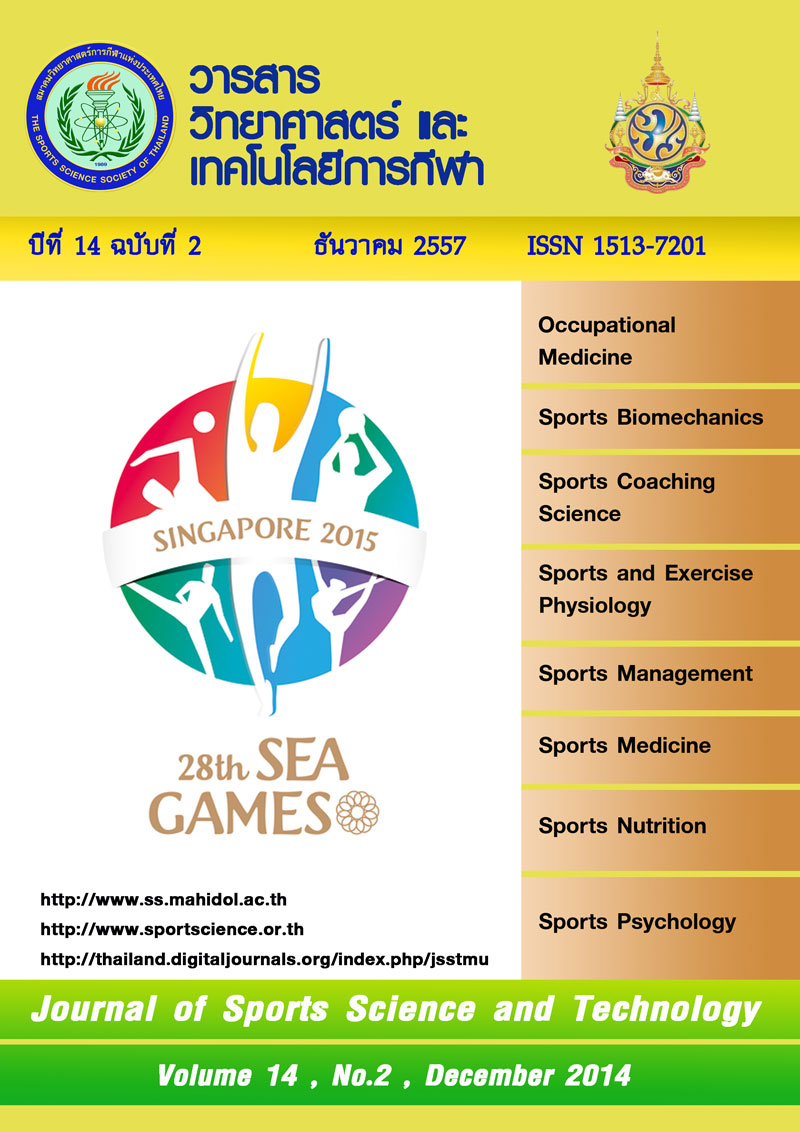COMPARISION IN MAXIMUM BALL VELOCITY OF 3-STRUCTURAL CHARACTERISTIC RACKETS USING SIMULATED TENNIS FLAT SERVE
Keywords:
Tennis flat serve, Maximal ball velocity, Structural characteristic of rackeAbstract
This research aimed to study maximal tennis ball velocity at various impact locations of tennis rackets among 5 different positions (P1-P5) using a racket testing machine and to compare efficiency in 3-structural characteristic of rackets. Data were collected from striking tennis balls by clamped handle racket with the machine driven at 450 rpm and 3D motion analyzed via two high speed cameras (2,000-Hz). This study focused on ball-racket interaction of flat serve at Pre-impact and Post-impact at afore-mentioned impact locations and smash ratios by 3-structural head of rackets (RR-rectangle, RT-triangle and RO-oval shapes) models. Two way ANOVA measures were used to analyze the data.
The results showed that resultant ballpre velocities of these positions (P1-P5) in all rackets differed statistically at p < 0.05 level of significance (LSD), except at P5 that offset at P3 (GSC) to the right. However, the ballpost velocities of RR model at P2 (0, 30; 44.436 + 0.193 m·s-1) was significantly greater than corresponding value of other locations. This phenomenon was also occurred in RT and RO models. While, racketpre velocities of all by GSC referred were practically near the same. Therefore, smash ratio (ballpost/racketpre) of 3-structural racket models, in which the highest ball velocity also occurred at location P2 (0, 30), were 1.444 + 0.011, 1.469 + 0.017 และ 1.472 + 0.023 respectively in each model but no significant difference.
Conclusion with equal speed at 450 rpm, impact location 30 mm distance above GSC of racket face was shown to produce maximum ball velocity and corresponding its smash ratio, respectively. In comparing the efficiency in 3-structural rackets, the smash ratio in RO model has tendency to build the highest ball speed higher than RR and RT models. This implies that concept of maximum ball outbound velocity could be utilized to effectively customize a tennis player’s typical first serve style as previous studies.
KEY WORDS: Tennis flat serve, Maximal ball velocity, Structural characteristic of racket






